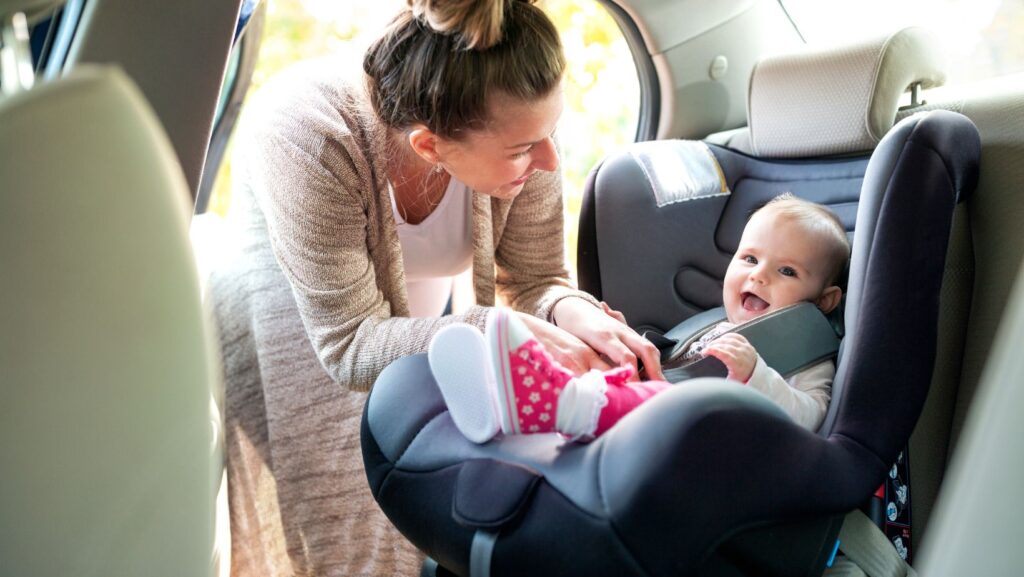When it comes to the safety of our children in vehicles, it cannot be stressed enough how crucial it is to remain vigilant and informed. As a seasoned car accident lawyer, having witnessed countless cases that involve injuries to minors, I have gathered invaluable insights on the best practices to ensure the safety of children while on the road.
This article aims to provide comprehensive guidance on child safety in vehicles, integrating expert advice and practical tips that every parent or guardian should be aware of.
Understanding the Risks
To appreciate the importance of child safety in vehicles, it’s essential first to understand the inherent risks. Car accidents are a leading cause of injury and death for children in the United States. According to the National Highway Traffic Safety Administration (NHTSA), approximately 183,000 children were injured in car crashes in 2019 alone. These statistics underline the critical need for proactive safety measures.
Appropriate Car Seats and Restraints
Infant Car Seats
For infants, using a rear-facing car seat is non-negotiable. These seats are designed to cradle the child and distribute forces evenly over the entire back, shoulders, and head in the event of a collision. It is recommended to keep your child in a rear-facing seat until they reach the maximum height or weight limit specified by the car seat manufacturer.
Convertible Car Seats
As your child grows, transitioning to a convertible car seat is the next step. These seats can be used both rear-facing and forward-facing. The general guideline is to keep the child rear-facing for as long as possible, typically until the age of two or until they outgrow the height and weight limits for the rear-facing position.
Booster Seats
When a child outgrows their forward-facing car seat, it’s time for a booster seat. Booster seats are designed to position the seat belt correctly over the child’s stronger parts of the body – the chest and pelvis.

The NHTSA recommends using a booster seat until the child is at least 4 feet 9 inches tall, usually between 8 and 12 years old.
Seat Belts
Once the child is big enough to wear a seat belt properly, it’s crucial to ensure the belt fits correctly. The lap belt should lie snugly across the upper thighs, not the stomach, and the shoulder belt should lie across the shoulder and chest, not the neck or face.
Installation and Usage Tips
Even the best car seat will not provide adequate protection if it is not installed correctly. Studies show that a significant percentage of car seats are used improperly, reducing their effectiveness. Here are some important tips:

- Follow Manufacturer Instructions: Always read the car seat manual and the vehicle owner’s manual. Installation methods can vary between vehicles and car seat models.
- Use the LATCH System: The Lower Anchors and Tethers for Children (LATCH) system is designed to make installation easier and more secure. Ensure the car seat is tightly installed and does not move more than an inch side-to-side or front-to-back.
- Check the Angle: For rear-facing seats, it is crucial to maintain the proper recline angle to keep the infant’s airway open.
- Secure the Child Properly: Ensure the harness straps are snug and positioned at or below the child’s shoulders for rear-facing seats and at or above the shoulders for forward-facing seats. The chest clip should be at armpit level.
Avoid Common Mistakes
Several common mistakes can compromise child safety in vehicles. As a car accident lawyer, I have seen many of these errors first hand:
- Loose Straps: Straps that are too loose can leave the child unprotected. They should always be snug enough that you cannot pinch any slack.
- Bulky Clothing: Avoid placing the child in bulky clothing or coats while in the car seat. These can compress in a crash, leaving the straps loose.
- Improper Positioning: Make sure the car seat is in the correct position – rear-facing for younger children and forward-facing for older ones as per guidelines.
- Using Expired or Second-Hand Seats: Always check the expiration date on a car seat. Avoid using second-hand seats unless you are sure of their history and they have not been involved in a crash.
Educating Caregivers and Children
Educating everyone involved in the care of the child, including grandparents, babysitters, and older siblings, is vital for ensuring consistency in safety practices. Here are some educational tips:
- Car Seat Clinics: Many communities offer car seat inspection clinics where certified technicians can help install car seats correctly.
- School Programs: Encourage schools and daycare centers to incorporate car seat safety into their programs.
- Lead by Example: Children learn by watching adults. Always wear your seat belt and follow safety rules to set a good example.
Legal Aspects and Advocacy
From a legal perspective, ensuring child safety in vehicles goes beyond personal responsibility. There are laws and regulations designed to protect children, and understanding these can be beneficial.
- State Laws: Each state has its own laws regarding car seat and seat belt use for children. Ensure you are familiar with and comply with the laws in your state.
- Liability: In the unfortunate event of a car accident, the appropriate use of a car seat can significantly impact the legal proceedings. Proper use demonstrates due diligence on the part of the parent or guardian, which can be a crucial factor in legal determinations of liability.
Final Thoughts
The safety of children in vehicles is a shared responsibility that requires education, diligence, and adherence to best practices. By understanding the risks, using appropriate car seats, ensuring proper installation, and avoiding common mistakes, parents and caregivers can significantly reduce the likelihood of serious injury or death in the event of a car accident.
As a professional in the field, my hope is that these insights empower you to take proactive steps in safeguarding your most precious cargo. Remember, the right car seat and correct usage can make all the difference in protecting your child on the road.

